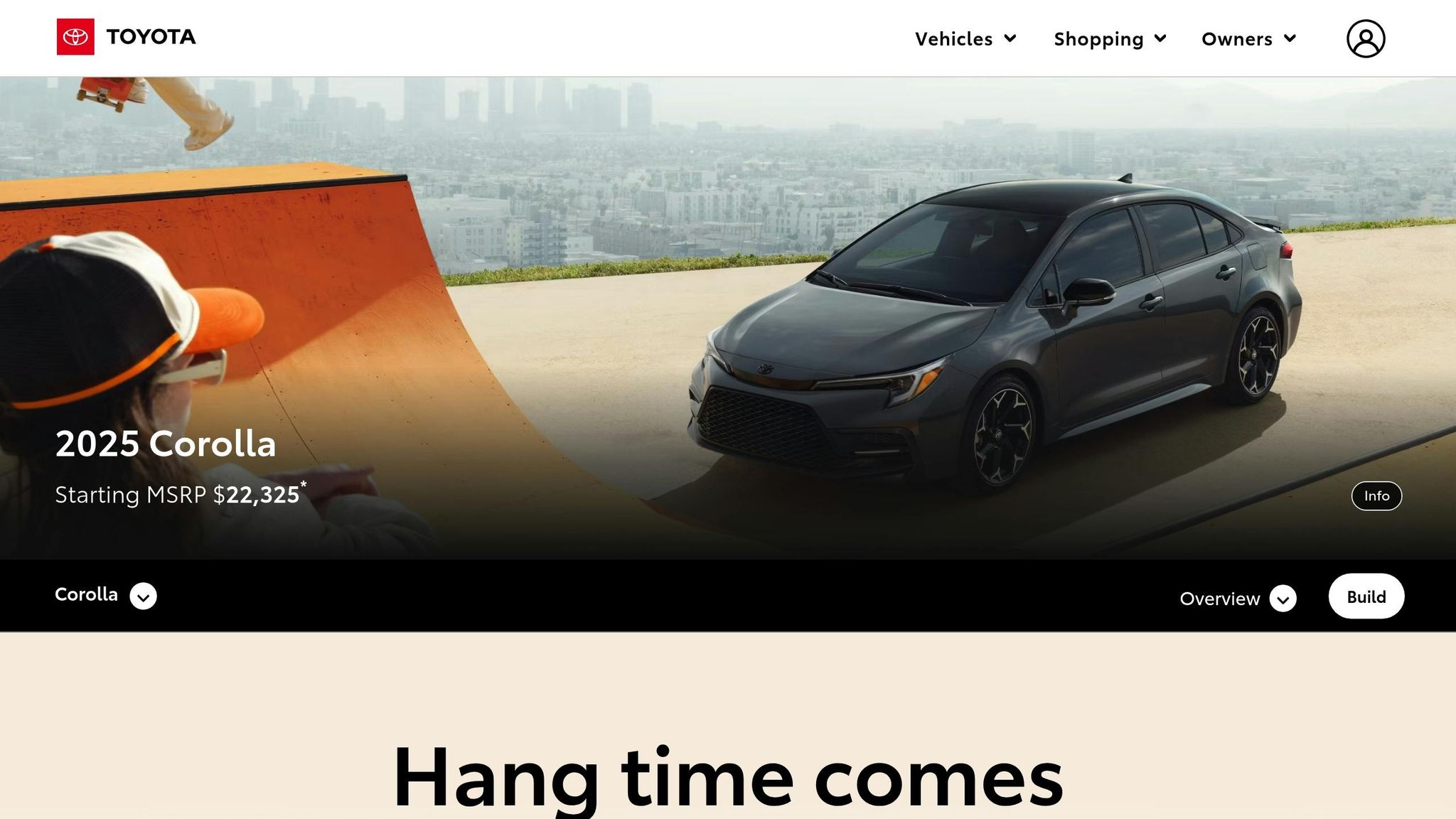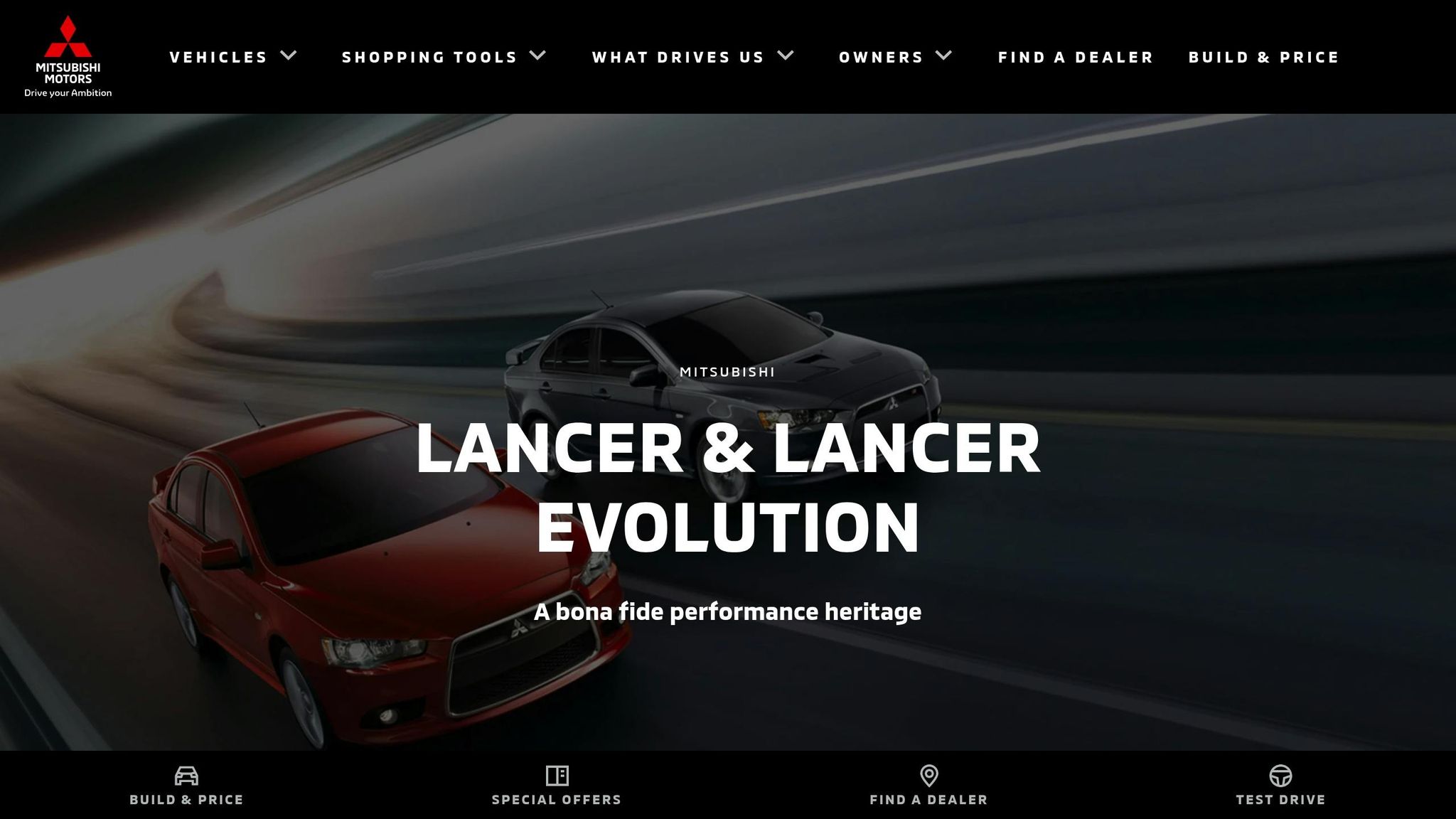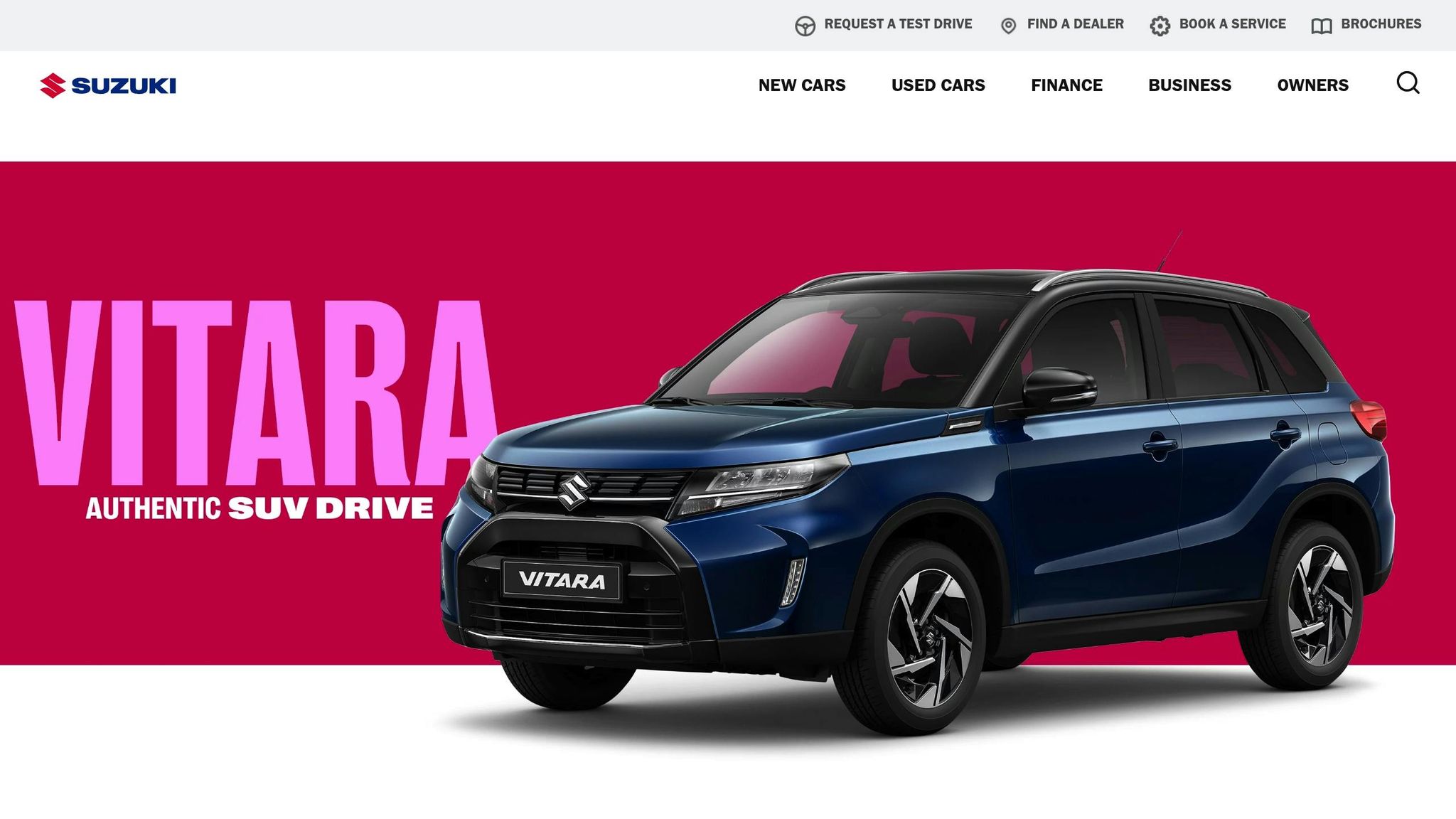Choosing a reliable car in Tanzania means finding one that can handle rough roads, save on fuel, and offer affordable maintenance. Here’s a quick guide to the top options:
- Toyota Corolla E100 (1995-2002): Durable, fuel-efficient, and cheap to maintain with widely available spare parts.
- Nissan Sunny B14 (1994-1998): Affordable and efficient, though slightly less robust than the Corolla.
- Mitsubishi Lancer Cedia (2000-2007): Sturdy and comfortable but with higher fuel consumption and limited spare parts.
- Suzuki Vitara (2015-Present): Modern SUV with great fuel economy and off-road capability but higher upfront costs.
Quick Comparison
| Model | Durability | Fuel Efficiency | Affordability | Spare Parts Availability |
|---|---|---|---|---|
| Toyota Corolla E100 | High | Good | Excellent | Excellent |
| Nissan Sunny B14 | Moderate | Good | Very Good | Good |
| Mitsubishi Lancer Cedia | Good | Good | Good | Moderate |
| Suzuki Vitara | Very Good | Excellent | Moderate | Good |
For tough roads, the Toyota Corolla E100 is a top pick for reliability and low costs. If you prefer modern features and off-road capability, the Suzuki Vitara is worth considering.
TOP 5 MOST POPULAR JAPAN USED CARS IN TANZANIA-2021
1. Toyota Corolla E100 (1995-2002)

The Toyota Corolla E100 holds a special place in Tanzania’s second-hand car market, thanks to its reputation for reliability and longevity. Whether navigating city streets or rural roads, this car has become a trusted companion for many drivers.
Durability
Built with a simple yet sturdy design, the Corolla E100 is well-suited to handle Tanzania’s varied road conditions. Its durability means it can withstand the wear and tear of daily use, requiring less frequent maintenance. This toughness, combined with its efficiency, makes it an excellent choice for everyday commuting.
Fuel Efficiency
The Corolla E100 strikes a great balance between performance and fuel economy. It comes with engine options in 1.3L and 1.6L variants, giving drivers the flexibility to choose a model that aligns with their driving needs and budget. This makes it a practical option for those looking to save on fuel costs.
Spare Parts Availability
Another advantage of the Corolla E100 is the ease of maintenance, supported by the abundant availability of spare parts. Its widespread use over the years has ensured that replacement parts are easy to find in the local market. For example, essential components like speedometer cables are priced between $31.18 and $52.68, making repairs both accessible and affordable.
2. Nissan Sunny B14 (1994-1998)

The Nissan Sunny B14 is a strong contender in Tanzania’s used car market, going head-to-head with the Toyota Corolla. Known for its reliability, fuel efficiency, affordability, and easy access to spare parts, this compact sedan has gained the trust of Tanzanian drivers seeking dependable and cost-effective vehicles.
Durability and Performance
The Nissan Sunny B14 is celebrated for its durability, capable of clocking several hundred thousand kilometers with proper care. Its lightweight build not only contributes to agile handling but also ensures it performs well on both city streets and highways. This combination of endurance and versatility makes it a practical choice for various driving needs.
Fuel Efficiency
Fuel efficiency is one of the standout features of the Sunny B14. Depending on the engine type and driving conditions, it achieves between 26 mpg and 47 mpg, keeping fuel expenses manageable for daily drivers. This level of efficiency, paired with its affordability, makes it a budget-friendly option for Tanzanian commuters.
Affordability and Value
The Sunny B14 offers excellent long-term value. With its reliable performance and low maintenance costs, it’s an economical choice in the second-hand market. Used models are typically priced around TZS 250,000, making it an accessible option for many buyers.
Spare Parts and Maintenance
One of the key advantages of the Sunny B14 is the availability of spare parts. Its widespread popularity ensures that parts are easy to find locally, making repairs straightforward and affordable. This accessibility simplifies maintenance and contributes to the car’s overall appeal.
Customer feedback further highlights the car’s dependability. Tanzanian owner Abraham Byamungu shared his satisfaction, stating:
"Thanks Be Forward for keeping the promise. I got my car in good order and it runs great. I will definitely buy again from you when needs arise."
3. Mitsubishi Lancer Cedia (2000-2007)

The Mitsubishi Lancer Cedia stands out as a dependable choice for Tanzanian drivers seeking more than just a basic ride. This compact sedan blends solid engineering with practical features, making it a great fit for both city streets and longer highway trips.
Build Quality and Performance
The Lancer Cedia is known for its sturdy construction. Its design strikes a balance between compactness and interior space, offering comfort without sacrificing efficiency. It provides reliable performance for daily driving needs, with reviews highlighting its durable engine and chassis components. This durability helps reduce unexpected repair issues and keeps maintenance costs manageable. With its solid build and consistent performance, the Cedia appeals to those who want a mix of reliability and capability.
Fuel Economy Considerations
While the Lancer Cedia performs well, its fuel efficiency is not its strongest point – it tends to consume more fuel compared to models like the Toyota Corolla or Nissan Sunny. This may lead to higher fuel expenses, but the trade-off is its refined engineering and overall driving performance. To mitigate its higher fuel consumption, regular upkeep is essential, as it also helps address common wear-and-tear issues.
Maintenance and Common Issues
Staying on top of routine maintenance is key to keeping the Lancer Cedia dependable. Tasks like oil changes, air filter replacements, and brake inspections are crucial. That said, some drivers have reported occasional issues such as uneven braking and minor rusting. Fortunately, these problems can be resolved with consistent care.
Spare Parts Availability and Costs
When it comes to spare parts, the Lancer Cedia offers a range of affordable options. Basic components like engine mounts are typically priced between $9 and $21, while ignition coils range from $7 to $20. More specialized parts, such as fuel injectors, generally cost around $10 to $12. Thanks to sourcing from both Japanese and international suppliers, finding replacement parts is relatively straightforward and hassle-free.
Value Proposition
For those prioritizing durability and comfort over fuel efficiency, the Mitsubishi Lancer Cedia delivers strong value. Its multi-link rear suspension ensures a smoother ride compared to the simpler torsion beam setups found in more budget-friendly models. Combined with a spacious interior and reliable build, it justifies slightly higher running costs. Positioned between the Toyota Corolla and Nissan Sunny, the Lancer Cedia is a solid choice for drivers who value ride quality and dependable engineering across various driving conditions.
sbb-itb-d9186c2
4. Suzuki Vitara (2015-Present)

The Suzuki Vitara brings a modern twist to reliable transportation in Tanzania. This compact SUV is designed for today’s drivers, blending advanced technology with the practicality needed for both urban commutes and occasional off-road trips. It’s a refreshing option for those looking to move beyond older sedan models, offering versatility for Tanzania’s diverse road conditions.
Modern Design and Capability
The current-generation Vitara reflects Suzuki’s "on road vehicle with all-road capability" philosophy. Equipped with the Allgrip four-wheel-drive system, it primarily operates in front-wheel drive for everyday use but can automatically redirect power to the rear axle when wheelspin is detected. This system ensures the Vitara handles city streets smoothly while being equally capable on rugged rural roads.
Driving Experience and Handling
The Vitara delivers a balanced and enjoyable driving experience. Its precise steering, minimal body roll, and solid road grip make it a reliable companion, regardless of the transmission option. The well-thought-out driving position, combined with intuitive controls, adds to its user-friendly nature. At 1,775 mm (approximately 70 inches) wide, the Vitara is compact enough to navigate narrow roads yet maintains a confident presence. While shorter than the Suzuki S-Cross, it still feels substantial on the road.
Fuel Efficiency and Engine Options
Fuel efficiency is a cornerstone of the Vitara’s design. With lightweight construction and smaller engine options, it offers impressive performance. Buyers can choose between 1.6L or 1.4L petrol engines, with real-world tests showing fuel economy of around 42 mpg on highways. This makes it an economical choice for daily commuting, especially where fuel costs are a concern.
Spare Parts and Maintenance Considerations
Suzuki’s global network, spanning 160 countries, ensures that parts for the Vitara are widely available. Genuine Suzuki components meet stringent quality and safety standards, which is reassuring for owners. Common parts like radiator caps ($4.53–$12.78), car batteries ($96–$202), and used differential centers (around $151) are accessible and reasonably priced. This availability contrasts with the simpler, less advanced designs of older Suzuki models.
Value for Modern Driving Needs
The Suzuki Vitara stands out as a versatile option for drivers seeking modern features and performance. It combines contemporary safety measures, fuel efficiency, and all-terrain capability, making it ideal for navigating Tanzania’s varied driving conditions. While its advanced technology may mean higher upfront costs and maintenance expenses, the Vitara’s adaptability and practicality make it a strong choice for families and individuals alike. Whether tackling city streets or rural trails, it offers a well-rounded solution for modern transportation needs.
Advantages and Disadvantages
Every vehicle model has its own set of strengths and weaknesses, making them suitable for different driving conditions across Tanzania. The table below summarizes key aspects of each model, followed by a detailed discussion to help you weigh the trade-offs and choose a car that fits your needs and budget.
| Vehicle Model | Durability | Fuel Efficiency | Affordability | Spare Parts Availability |
|---|---|---|---|---|
| Toyota Corolla E100 | High – Renowned for reliability, even on rough roads | Good – Ideal for daily commuting | Excellent – Low cost to buy and maintain | Excellent – Parts are widely available and affordable |
| Nissan Sunny B14 | Moderate – Suitable for mixed use, though less robust than Toyota | Good – Decent for city driving | Very Good – Budget-friendly purchase and upkeep | Good – Parts are accessible due to its popularity |
| Mitsubishi Lancer Cedia | Good – Sturdy for urban and light off-road driving | Good – Balanced efficiency and performance | Good – Fair price for the features provided | Moderate – Some parts may need to be specially ordered |
| Suzuki Vitara | Very Good – Handles varied road conditions effectively | Excellent – Strong fuel economy on highways | Moderate – Higher upfront cost, modern features | Good – Supported by a reliable service network |
Durability Matters
On Tanzania’s challenging roads, durability is a crucial factor. While all models offer some level of resilience, the Toyota Corolla E100 stands out for its long-term reliability, making it a dependable choice for tough conditions. Other models, like the Suzuki Vitara, also perform well, especially for varied terrains, but come at a higher price point.
Fuel Efficiency: A Cost-Saving Factor
Fuel efficiency is another major consideration, with all models delivering respectable performance. The Suzuki Vitara excels on highways, offering savings on long trips. Meanwhile, the Toyota Corolla E100 and Nissan Sunny B14 provide solid efficiency for urban commutes. Given that services and parts account for about 35% of a vehicle’s upkeep costs, choosing a fuel-efficient car can significantly reduce long-term expenses.
Affordability Beyond the Price Tag
Affordability isn’t just about the sticker price – it’s about the ongoing costs of ownership. The Toyota Corolla E100 and Nissan Sunny B14 shine in this category, offering low maintenance costs alongside their budget-friendly purchase prices. However, while Nissan models are cost-effective, they may not match Toyota’s reputation for durability, highlighting the importance of balancing upfront savings with long-term reliability.
Spare Parts Availability: A Practical Concern
With Japanese brands dominating over 80% of used car sales in Tanzania, spare parts for these models are widely available. Mechanics across the country are familiar with these vehicles, making repairs straightforward and cost-effective. The Toyota Corolla E100 leads in this area, thanks to its enduring popularity, while the Mitsubishi Lancer Cedia may require more effort to source certain parts.
Making the Right Choice
When comparing these models, clear patterns emerge. Older options like the Toyota Corolla E100 offer unmatched affordability and easy access to spare parts but may lack modern features. On the other hand, the Suzuki Vitara provides advanced technology and excellent fuel economy, though it requires a higher initial investment. The Nissan Sunny B14 and Mitsubishi Lancer Cedia strike a balance, catering to drivers with varied priorities.
Ultimately, regular maintenance plays a key role in keeping repair costs manageable and ensuring a car’s longevity. Before making a purchase, it’s a good idea to compare the costs of replacement parts for the models you’re considering.
Final Recommendations
Selecting the right vehicle in Tanzania involves weighing key factors like reliability, cost-effectiveness, and practicality. It’s about finding a balance between durability, fuel efficiency, and manageable maintenance – elements we’ve explored in depth.
For those navigating urban streets and rural terrains, opt for a vehicle that combines good fuel economy and low maintenance costs for city driving. At the same time, prioritize sturdiness and ease of repairs for trips on rough, uneven roads where resilience is critical.
Seek advice from a trusted mechanic and talk to current vehicle owners to get firsthand insights into performance and upkeep. Also, practice defensive driving and adhere to speed limits – around 50 mph on highways and 25 mph in town – to stay safe on Tanzania’s varied road conditions. These tips can help you make a choice that meets both your daily needs and long-term expectations.
FAQs
What should I consider when choosing a reliable car for daily use in Tanzania?
When picking a dependable car for daily use in Tanzania, there are a few important factors to keep in mind to make sure it fits your lifestyle. First, durability is key. The car needs to withstand rough roads and last for years without constant repairs. Another crucial aspect is fuel efficiency, which can help you cut down on expenses, especially with fluctuating fuel prices. Don’t forget to think about affordability – not just the upfront cost but also ongoing maintenance.
You’ll also want to ensure that spare parts are easy to find and reasonably priced in Tanzania. This can save you a lot of hassle and money over time. Lastly, opt for a car that performs well on both city streets and rural roads, since driving conditions can vary widely depending on where you are in the country.
How does the availability of spare parts affect the cost of maintaining reliable cars in Tanzania?
The availability of spare parts has a big impact on how much you’ll spend on maintenance. When parts are easy to find, repairs are completed faster and cost less because labor time is reduced, and your car spends less time out of service. However, when parts are hard to come by, repairs take longer, driving up labor costs and delaying how soon you can get back on the road.
Cars that rely on commonly available parts usually come with lower maintenance expenses compared to those needing rare or specialized components. Scarce parts often mean higher prices and longer wait times, which can quickly add to your costs. For drivers in Tanzania, opting for a car with widely available spare parts is crucial for keeping maintenance affordable and ensuring consistent performance, whether navigating busy city streets or tackling rural terrain.
Why would someone choose the Suzuki Vitara over the more budget-friendly Toyota Corolla E100, even though it costs more upfront?
The Suzuki Vitara is built to handle a variety of road conditions, combining rugged durability with features that make it a solid choice for both city streets and rural landscapes in Tanzania. With a 5-year/200,000 km warranty and a 6-year/90,000 km service plan, it’s designed to offer lasting value and peace of mind for its owners.
Although the Toyota Corolla E100 comes with a lower price tag, the Vitara brings superior off-road capabilities, greater reliability, and a design tailored for challenging terrains. For those seeking a vehicle that can tackle diverse driving environments while offering long-term benefits, the Vitara justifies its higher upfront cost.
Related posts
- 7 Best Used Cars Under 10M TSh in Tanzania
- Best used cars in Tanzania 2025
- Most sold cars in Tanzania
- Top 5 Budget Cars Under TSh 20 Million in Tanzania




